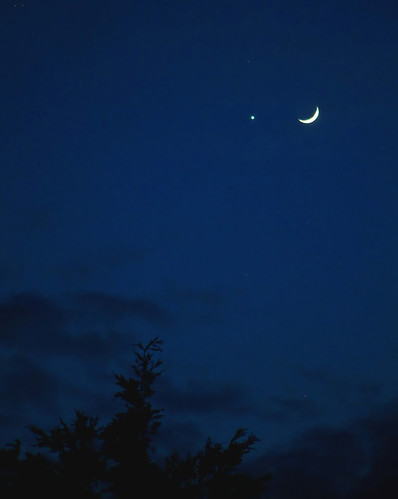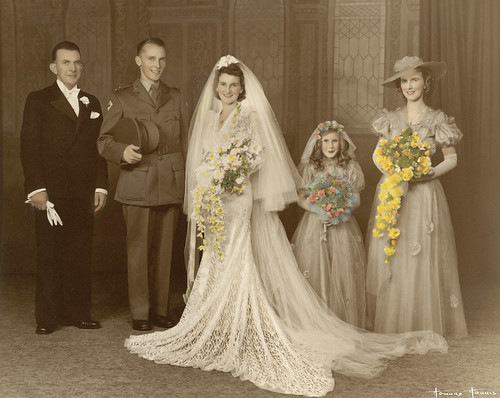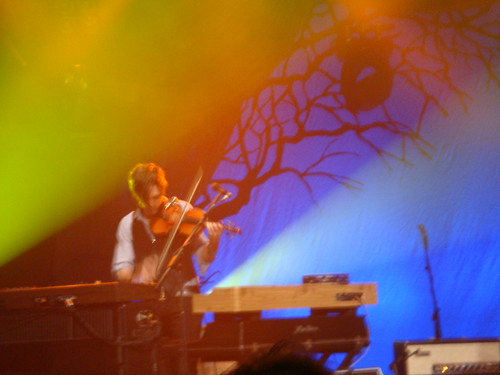Thursday, December 8, 2011
Inside the Strange Science of Cord Blood Banking
In a nondescript commercial park on the outskirts of Las Vegas, a large cryogenic stem cell storage facility is ready to accept your baby’s blood.
Cord Blood America in Las Vegas is one of dozens of private cord blood banks in the United States that, for a fee, will store stem cell-rich blood taken from a newborn baby’s umbilical cord.
Over one hundred thousand families save or donate cord blood annually, in the hopes it will one day provide medical help to their child or someone else.
“My vision is within the next 10 years we’ll see organizations like this develop into cellular therapy labs,” said Dr. Geoffrey O’Neill, vice president of CorCell, the subsidiary company that runs Cord Blood America’s Las Vegas facility. It’s beginning to happen now in countries like China and Mexico, he says.
But while banking cord blood is legal and safe, many health care professionals question the value of private banks. Regenerative therapies based on stem cells from cord blood have had mixed preliminary success, and researchers are split over when and whether they’ll ever come through.
In the meantime, private cord blood banks are expensive, their marketing can be misleading and their practicality is suspect.
Read the full story.
Photo: Jim Merithew/Wired.com Creative Commons licensed under BY-NC.
Monday, September 26, 2011
Give Bees a Chance: My feature in Science Notes!
To get a harvest a big part of an almond farmer's late winter and early spring is absorbed in ensuring enough pollinators make it into the orchard.
A big part of my late winter and early spring this year was absorbed in reporting on a small, but growing movement to get native bees to help. Out of the field visits and phone calls came my first feature story: Give Bees a Chance.
The story recently went live on Science Notes, the hallmark publication of the UC Santa Cruz Science Communication Program. The piece is gorgeously illustrated by the hyper-talented Chelsea Crist (image above) and Julie Naylor (right) from the CSU Monterey Bay Science Illustration Program.
Wander around, you'll read about the problems facing our honeybees, the wild, glorious diversity of California's native bees, challenges facing farmers like the almond-growing Chris Schlies and the efforts of Claire Kremen, a conservation biologist at UC Berkeley, to change the face of large-scale farming. It comes with a video and a podcast, both narrated by yours truly and featuring buzzing of bees.
As a final bonus, the piece got a lovely shout-out by Charlie Petit over at the Knight Science Journalism Tracker.
A big part of my late winter and early spring this year was absorbed in reporting on a small, but growing movement to get native bees to help. Out of the field visits and phone calls came my first feature story: Give Bees a Chance.
The story recently went live on Science Notes, the hallmark publication of the UC Santa Cruz Science Communication Program. The piece is gorgeously illustrated by the hyper-talented Chelsea Crist (image above) and Julie Naylor (right) from the CSU Monterey Bay Science Illustration Program.
Wander around, you'll read about the problems facing our honeybees, the wild, glorious diversity of California's native bees, challenges facing farmers like the almond-growing Chris Schlies and the efforts of Claire Kremen, a conservation biologist at UC Berkeley, to change the face of large-scale farming. It comes with a video and a podcast, both narrated by yours truly and featuring buzzing of bees.
As a final bonus, the piece got a lovely shout-out by Charlie Petit over at the Knight Science Journalism Tracker.
Sunday, June 26, 2011
Spiders, clocks and Valkyries
 | ||||
| Crafty, nubile Rhinemaidens (Woglinde, Wellgunde, Floßhilde) tease the dwarf Alberich as he reaches out for one of them -- the scene that begins The Ring. Illustration to Richard Wagner's Das Rheingold/Wikimedia |
The week is sure to be epic. By this time next Sunday I will have (somehow) absorbed nearly 20 hours of Wagnerian opera. Tuesday evening marks the first installment of Der Ring Des Nibelungen, a four-part opera-to-end-all-operas.Woody Allen once said that Wagner left him with an urge to invade Poland, we'll see what it does to me.
 | ||
| Rhine scene from the San Francisco production/SFOpera.com |
[The Ring] requires considerable work: reading at least two books in addition to the libretto and spending several hours at the piano or victrola. If the opera goer does not care to put in that time or has not done so, he would do better to stay home, even if offered free seats.I'm sorry Martin, stuff it. I'm going. I've neither read the libretto nor sat down at the victrola, but at my side I'll have (in spirit) Anna Russel, comedienne and Ring-interpreter extraordinaire, and (in person) Emilia, sweet and virtuous friend. Somehow the three of us will make it through. {Cue Valkyrie music.}
Part of the reason I haven't been spending hours at the piano with Wagner's score is that I've started writing for Wired Science on Wired.com once again. It's keeping me busy, caffeinated and happy. My two most recent pieces: A gallery of the world's most impressive time-keeping devices and a video of spiders in space. Stay tuned for more.
Thursday, April 28, 2011
Limited listening: SETI Institute's Allen Telescope Array gets quiet
 |
| Allan Telescope Array, Hat Creek Radio Observatory, Colby Gutierrez-Kraybill/Flickr |
These budget reductions are sad news, for me and for many people. SETI matters have appeared on this blog before (and for pieces I've written for Wired Science and for class). What actually interests me most about the field – more than the aliens themselves – is how the search affects those drawn to it. (For more on this watch Jill Tarter's, director of the institute’s Center for SETI Research, 2009 TEDtalk.
 |
| Night sky (Sabby3000/Flickr) |
The desire to reach intelligence beyond the bounds of earth, seems to imbue goodwill towards the life already here (snarky jokes shelved for another time). By turning off equipment that makes the search possible, we're lowering our perspective. Our concerns become more base. I can't think of any time when that worked to our advantage.
Tossing in my two copper coins, I hope it's not too long before our ears perk up again.
(*Note: Silly Danielle, radio signals aren't actually sound, but stretched-out, far-journeying light.)
= = = = = = = = = =
For reading see:
-Search for ET Put on Hold, Seth Shostak, a lively, likeable Senior Astronomer at the SETI Institute, Huffington Post;
-SETI Institute to shut down alien-seeking radio dishes, Lisa Krieger, the San Jose Mercury News;
-SETI Institute suspends search for alien signals, David Perlman, the San Francisco Chronicle;
-Or see the announcement and request for donations on the Institute's website.
= = = = = = = =
(A repost from ATaleofTenSlugs.com)
Labels:
SETI
Monday, April 18, 2011
An Ideal Husband: Lessons on Freelancing
 |
| The way to write? (Norma and Frank Bissaker on their wedding day, 1941/Flickr) |
It is a truth universally acknowledged that a freelance writer embarking on her career, must be in want of health insurance.
-Jane AustenDanielle Venton
The first time someone tells you that marrying well is key to successful freelancing – by that read “marrying into health insurance” – it's fairly easy to laugh. It lends a scent of the Victorian to the lifestyle, and accessorizes it with calling cards and afternoon tennis matches. The second time, its easy to crack a wry smile. Ah yes, I've heard this joke before. I began to worry it wasn't a joke when I heard it a third time. And when, for the fourth time, a professor, mentor or seminar speaker said that one absolutely must take care to exchange rings only with the employed, insured and pensioned, there set in a mild panic.
Now, I have nothing against those with steady jobs and retirement plans. Nor am I prejudiced against those with healthy savings accounts. However, as alluring as the prospect of health insurance might be, it's hardly inducement to hop in bed with someone. Therefore, I have been formulating a post-SciCom survival plan. I thought I might share, in case it is useful or in case you, reader, have suggestions of your own to offer.
Now, I have nothing against those with steady jobs and retirement plans. Nor am I prejudiced against those with healthy savings accounts. However, as alluring as the prospect of health insurance might be, it's hardly inducement to hop in bed with someone. Therefore, I have been formulating a post-SciCom survival plan. I thought I might share, in case it is useful or in case you, reader, have suggestions of your own to offer.
A SCIENCE WRITER'S HIERARCHY OF NEEDS
Let's start with basics: food, clothing, shelter and entertainment. (A little distraction is, at least for me, also a requirement.) In terms of expense, housing trumps the list so nailing that down is most important. I could, I suppose, join a hippie commune or go back to being a live-in nanny, but I like the idea of having my own walls and roof. The most practical idea currently seems to be to build myself a Tumbleweed House. This company sells plans to tiny, yet complete, houses, or the pre-built houses themselves. At the moment my whimsy favors this model, The Harbinger. The very name inspires hope.
And where to put it? I hear you ask. My parents own about an acre of land on the outskirts of Petaluma. I'd like for them to think it would be a great idea if I tore down the old shop in the backyard, site of much camping equipment and fatherly tinkering paraphernalia. In its place I'd build a little picket-fence-enclosed home. Scuttlebutt is, if it is small enough, you don't need the city permits that a full-fledged dwelling calls for (ironing all of that out is sure to be an odyssey). All I need is a self-composting toilet, some solar panels, maybe an electricity-generating stationary bike, a way to get on the internet and I'm set.
Food, of course, is also a primary consideration. The backyard already holds seven fruit trees and more can be planted. The family vegetable garden can also be expanded. We could once-again raise chickens for eggs and, coming from angler-hunter-gatherer stock as I do, there is always seafood and venison around. I do enjoy a meal out with friends, but I can accept I'll need to eat out only on occasion. Home cooked meals always taste better anyway.
Saving on clothing is going to be less of a problem for me that it would be for, say, some of my Swiss or New Yorker friends. In this case, however, self-sufficiency is not the way forward for me. Once upon a time, I tried my hand at sewing. The ill-fated blouse was so supremely frustrating that, by the time I was done with the wretched thing, I had grown to loathe it. I don't think I've ever worn that shade of orangey-peach ever again in my life, ever. Thrift and consignment stores will be in my future, as they have been in my past.
Now, I am extremely talented at getting into situations that are best survived by laughing at myself. The truth is, however, a little external entertainment is far easier on the nerves and less likely to cause injury.
Fortunately my most of my pastimes are quite economical: reading, running, backpacking, going to Giants games with my brother. It would be far worse if my hobbies included, say, skiing, yachting, Swiss watches and heroin. (Full disclosure: I do actually own a Swiss watch and I've never done heroin.)
I'm happy to rely on the public library system for my books and movie rentals. Running is as cheap as free. With the exception of a decent three-season tent, I already own most of the needed backpacking equipment. Jeff and I always get the cheapest Giant's tickets.
I do, I must say, enjoy seeing live music. My plan for working this into my impoverished future life is a two-pronged approach. For opera: standing room! Tickets are $10. For the symphony: Rush tickets are $20 For modern music: catch on to the bands before they are famous, when the tickets are less.
These plans for frugal living are only meant to be taken so seriously, obviously. But the idea of standing through four hours of Madam Bovary is far easier to swallow than the idea of enduring a dating world where I have to include “financial security for two” along with my other requirements. It's already a lot to ask that someone be tall, smart, funny, red-haired, a fan of MST3K and have a large and generous heart. I'm not interested in asking to see their stock portfolio as well.
SciCom is full of practical wisdom, to be sure. Some of us, though, might need to supplement our training with home vegetable gardening lessons and workshops on plumbing installation. All tips welcome.
Labels:
graduate school,
SciComms
Thursday, March 31, 2011
Surf city tsunami
 |
| Tsunami surges reach Santa Cruz, March 11 (Image: Flickr/Dan Dawson, used with permission) |
One week after a tsunami washed into Santa Cruz harbor and ricocheted around the docks, harbor life has yet to settle. Joggers pass stretches of yellow caution tape. Men in hardhats and plaid shirts clear debris with shovels and high-pressure water hoses. Cafe patrons at the Kind Grind swap yet-to-stale tsunami stories. And, on the docks, Lisa Price's fourth grade class walk among the boats.
Her class – each child snapped into a life vest – is on their annual O'Neill Sea Odyssey outing, run by the company famous for wetsuits and surfing gear. “Every year we love this field trip,” says Price, who teaches at Calabasas Elementary School in Watsonville, Calif. The students learn basics of marine ecology and navigation, such as how to use a compass. Last year her class left the harbor on the Team O'Neill catamaran and saw dolphins and sharks in the bay. This year, as the debris is cleared from both the water and the parking lot, they'll board the dual-hulled boat, but remain dockside.
On the morning of March 11 central California was hit by a tsunami, triggered by Japan's Honshu earthquake. Only six students attended Ms. Price's class that day. The rest stayed home with worried family members. In the Santa Cruz harbor, surges of 5 to 6 feet left $22 million worth of damaged boats, docks and equipment. Now, in the tsunami's wake, the harbor and surrounding community is asking how to return to their routine, and which lessons should be drawn. Nine boats sank during the tsunami and two are still missing, presumed sunken. Dozens of others need repairs or dismantling.
At the boat works, Tom McKervey fields phone calls from anxious owners. “Yeah, you're on the list – twice for some reason,” McKervey says. “We'll get to you. We've got a little triage here – we have to take care of the leakers and the sinkers first.” He replaces the handset, “One of my esteemed customers.”
McKervey, blue eyed and white mustached, manages Aquarius Boat Works – a sort of maritime apothecary and repair store. Above the dusty wooden floors the walls are lined with hooks, ropes and maps. On shelving bins of weights and floats sit next to cans of paint and tubes of Spackling paste. The evening of March 10, McKervey watched news clips of the destruction in Japan. He arrived early at the harbor the following morning to tie down loose boats and riggings. He spent the day on the docks, alternately pushing debris away from boats with a pole and running to higher ground during surges.
“All day long the images of their plight [in Japan] made me think – this is a picnic compared to what those folks had to live through,” he says. “Here only things were broken. Nobody got terribly hurt.” On McKervey's right hand, his thick middle finger holds a row of stitches. “I got a little cut out of the deal,” he says, dismissing it. He believes he will see a change in the local mix of boaters as a result of the tsunami damage, that is his real concern.
Santa Cruz hosts power boaters, sport and commercial fishermen and sailboat lovers. “Some of these folks are working towards the dream of sailing off into the sunset,” he says. And, while it's prominence has diminished, Santa Cruz is still a racing port. “I'm sure the harbor is going to shrink, both in people and boats. Many folks could only marginally afford boating before.” McKervey hopes the harbor will design a faster alert for boat owners, perhaps with a telephone chain, instead of relying on TV and radio. If more people had known sooner, he says, they could have waited out the swells in the open ocean.
Residents nearby responded to the tsunami in ways typical of Santa Cruz. On the day, surfers paddled out, hoping for waves worthy of a Japanese woodblock print. Onlookers crowded the bridges stretching over the harbor, boxes of pizza and six packs of beer at their side, shouting encouragement to McKervey and his fellow workers. The next week, a crowd of more than 100 packed the Community Room of the Santa Cruz Police Department to discuss preparations for the next tsunami.
Some wanted to know, street-for-street, how safe their houses were. Some wanted to know where to watch the waves roll in. Steven Ward of the University of California, Santa Cruz said he understood tsunami curiosity – the desire to head for water – and suffered from it himself. But, addressing the crowd as a geophysicist who studies tsunami's, he urged caution. “Scientists understand the general concepts, but its hard to predict how severe surges will be – especially in real time,” Ward says. “You might expect more of scientists than we can give.”
This is both humbling and frustrating. “My feeling,” says McKervey, “is that these events show us we're pretty insignificant – it reminds me to be grateful I'm alive.”
Watch a video of the tsunami, posted on YouTube by the Santa Cruz Sentinel:
Labels:
graduate school,
writing
Thursday, March 24, 2011
Music to write to: Andrew Bird, The Decemberists & Afriki Djigui Theatri
 |
| Montreaux Jazz Fest/D. Venton |
The best artist I’ve found to write along to is hands down, violin bows up, Andrew Bird. His music is beautiful, looping and lyrical. Something about his dual continuity and innovation help me gather momentum -- particularly if I’m having trouble getting started.
See him solo and live and you can watch as he builds multi-track songs, one element at a time. He records violin-plucking for the beat, whistle-melodies for motifs, and begins to sing. All the while your eyebrows gradually migrate to the outside edges of your forehead. The man has talent.
Catch a live show, if you possibly can, or watch a great example here (if you only watch one of the videos in this post, pick this):
When I’m working for several hours, I often have Andrew Bird on a continual loop in my iTunes. Below, the YouTube Andrew Bird playlist. Particularly addictive tracks include “Thank God it’s Fatal,” “Operation,” “Sythian Empire” and “Mitosis.”
I am also a Decemberists fan, devoted and devout. During the month of February I listened to their new album, The King is Dead a lot. The band (featured in a recent Talk of the Town, “No. 1”) has an ability to make every genre they turn their instruments irresistible. They also have a fantastic vocabulary, employing words such as “palanquin,” “odalisque,” and “roustabout.”
If you are a Decemberists neo-phyte, and unafraid of the idea of good country music, give the opening track of their latest album a try:
And if you’re willing to go for the serious honey-tonk:
Otherwise, an easier entry point might be The Crane Wife (loosely based on a Japanese fairy tale) or The Hazards of Love (a total rock opera, a la Deep Purple). These folks are also *just fantastic* live.
There is also something great about listening to music sung in a language I can’t (or can just barely) understand. My favorite breed of this is music from French-speaking Africa. I’ve poked around the International section of iTunes’ radio offerings and have settled on Afriki Djigui Theatri (also available here). I even like the commercials. I understand just enough of the French to stay amused, without growing annoyed at the advertising.
But I don’t want this post to be one glowing review after another. So let me say that, contrary to their name, Muse is lousy to write to. And while they put on a great light show (see below) I also think they’re pretty lousy live.
 |
| Muse in Lyon, France/D. Venton |
Now that I’ve compiled my list, and have offered you more links than you can comfortably process, I wonder what White, Zinsser, and Blundell would say about my habit of scribbling with tunes in the background. I’ll look into it and get back to you. Meanwhile, send me what you write to either below or at danielle.venton[at]gmail.com.
Subscribe to:
Posts (Atom)







